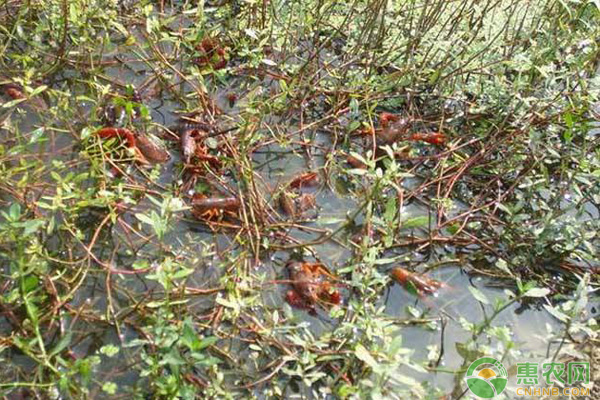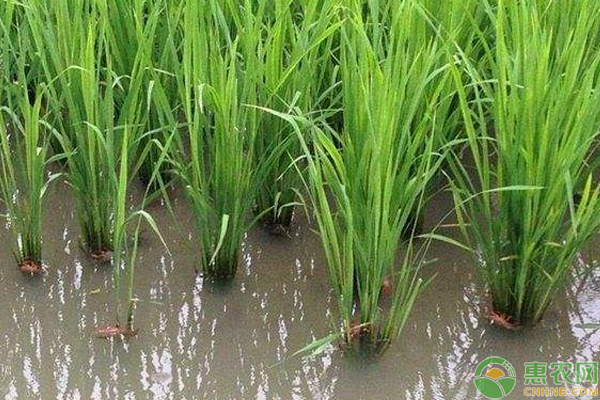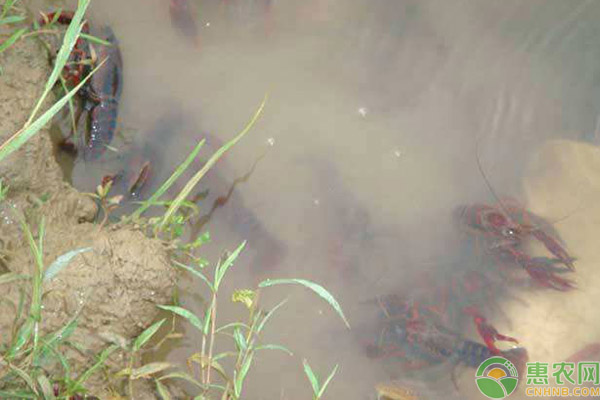Yuping County is located in the eastern part of Guizhou, in the transition zone from the mountainous area to the hills. The terrain is uneven, the water resources are abundant, the water quality is good, and the climate is suitable. The vast rural areas have a long history of rice-fish farming, and it is suitable to promote the comprehensive breeding techniques of rice and shrimp. Let's learn the technical points of comprehensive breeding of rice and shrimp in the mountainous area of ​​Yuping County.

1 Rice field selection and field engineering
1.1 Rice field selection
The choice is relatively flat, the water source is sufficient, the water quality is good, the water retention is good (the soil is better with loam), the irrigation and drainage is convenient, the water, electricity and roads are connected, and the rice fields affected by the drought and flood disasters are comprehensively cultivated.
1.2 Field Engineering
1.2.1 Excavation of shrimp ditch
Excavate the surrounding ditch at a distance of 1 m from the inside of the rice field. The width of the ditch is 3 to 4 m and the depth of the ditch is 0.8 to 1 m. The larger field is excavated with a “ten†shaped field ditch, and the ditch is 1 m. The ditch depth is 0.5 m, and the ditch accounts for 10% to 20% of the paddy field.
1.2.2 Heightening reinforcement
Use the soil that excavates the shrimp ditch to strengthen, heighten, and widen the field. For the reinforcement of the field, each layer of soil should be tamped to prevent water seepage or collapse. Tian Hao should be 1.0 to 1.2 m above the surface, 0.6 to 1.0 m wide at the top, and 1:2 slope ratio.
1.2.3 water intake and drainage system
The inlet and outlet ports are located at the ends of the rice fields, and they are placed diagonally as far as possible. The water inlet channel is built on the field at one end of the paddy field, and the water inlet is filtered into the water with a long mesh bag of 80 mesh (nylon filter sieve) to prevent the enemies from entering with the water. The drain is built at the lowest point of the shrimp ditch at the other end of the paddy field, and a 40 mesh nylon filter mesh is installed to prevent lobster flight and enemy intrusion. Inlet and drainage channels are required to be independent, in accordance with the pattern of high irrigation and low drainage, to ensure that water irrigation can be imported and discharged.
1.2.4 anti-floating facilities
A 60 cm high anti-escape facility is built around the paddy field with a thick plastic film. The plastic film is embedded in the soil of the field and is 10 to 15 cm. It is fixed with wooden stakes every 1 m. The 4 corners should be curved to prevent the lobster from being angled. Climb and flee.

2 Preparation before stocking
2.1 shrimp ditch disinfection
Drain the ditch water for 30 d before stocking, and spray 100 kg of quicklime per 667 m 2 of water surface about 10 d before the prawns to thoroughly disinfect and kill wild fish, enemy organisms and pathogenic bacteria. . After the rice fields are flooded, if there are fertilized eggs of fry and frogs, they should be removed in time and cleaned, otherwise the shrimps will be harmed.
2.2 transplant water plants
After the rice field is sterilized with lime for 10 days, add water to 20 cm, and cut the Hydrilla verticillata into small pieces with a length of about 20 cm. Then, like the transplanting, insert the soil into the soil at a distance of 1 m × 1 m, and wait until the roots of the Hydrilla verticillata are rooted. Applying compound fertilizer to the whole pool for ~10 d, applying 1 kg per 667 m 2 to fertilize the water body to promote the growth of Hydrilla verticillata. By mid-April, the Hydrilla verticillata can grow more vigorously. In addition, put some water hyacinth or water peanut on the water surface to create a good ecological environment for the crayfish. The planting area of ​​the water grass accounts for 20% to 25% of the area of ​​the shrimp ditch. It is better to distribute it sporadically. The water flow in the shrimp ditch is smooth.
2.3 Water quality training
In order to ensure that the shrimps have sufficient live bait after entering the field, they can apply about 200 kg of decomposed organic fertilizer per 667 m 2 7 days before seeding, and fertilize the rice fields, cultivate the algae, and eat the shrimps after the pond. As a natural bait, the abundant beneficial bacteria in the water body is beneficial to promote the growth and metabolism of shrimps and increase their survival rate.
3 Aquaculture management
3.1 seed placement
From April to May, 40 kg of shrimp seedlings were placed per 667 m 2 with a specification of about 120 to 130 fish/kg. Choose juveniles with a color of tan or red, complete limbs, no disease, no injury, strong mobility, good health and good growth and development. The stocking of shrimps is generally carried out on sunny mornings and evenings or rainy days. At this time, the weather is cool and the water temperature is stable, which is conducive to the stocking of lobsters to adapt to the new environment. Before stocking, it is necessary to carry out slow seedling treatment. After using the field water to pour the shrimp seedlings for 2 to 3 times, let them climb into the shallow water area of ​​the field and timely remove the shrimp seedlings that are not strong or close to death to prevent the water quality from being polluted. When stocking, pay attention to the quality of the juvenile shrimp. The stocking specifications of the same field should be as neat as possible, and the foot should be placed once.
3.2 Feeding of bait
The daily feeding amount of crayfish is based on the principle of fullness, eating, and no bait. It is adjusted according to the weather, water quality, density and different growth stages and physiological periods of crayfish. Generally, for fresh feed, the feed rate of juvenile shrimp is 8% to 10%, and the feed rate of shrimp is 6% to 8%. For compound feed, the feed rate of juvenile shrimp is 4% to 6%, and shrimp is fed. The amount is 3% to 5%; in the actual breeding, the feeding amount is 3 hours after the feeding, and it is appropriate to check the bait table for a small amount of rest. If the natural bait in the aquaculture water is rich, the feeding amount is appropriately reduced. On the contrary, increase the amount of feeding. Shrimp should be reduced before feeding the clam shell, and the feeding should be increased after the clam shell is concentrated. The feeding method should follow the "four-set" principle of "timing, quantification, quality, positioning". Crayfish mainly feed at 8: 00-10: 00 and 18: 00-22: 00 every day, and the food intake is the largest in the evening. Therefore, it can be fed twice a day in the morning and evening, and the feeding amount is 20% of the daily feeding amount. And 80%. Crayfish compound feed must choose feed with balanced nutrition, good attractability and stable quality. Fresh feed must be kept fresh and not degraded. The feed should be evenly spread along the edge of the ring, and it is not necessary to feed in the ring. When the water temperature is lower than 15 °C, the feeding is stopped.
3.3 daily management
In daily management, it is necessary to check and train the pond frequently. In the morning, check whether there is any residual bait in order to adjust the feeding amount of the day. In the evening, observe the feeding, activities, and shelling of the crayfish, and do a good job of patrolling the pond. Remove the moss from the pool in time, and check the filter screen of the inlet and outlet to prevent the shrimp from fleeing after the filter is damaged. When encountering bad weather such as thunderstorms and hot weather, it is necessary to reduce or stop feeding. When the weather is too hot or too cold, the pool water should be properly deepened to stabilize the water temperature, especially during storms.
3.4 enemy disease prevention
1) Prevention and control of enemy
In the process of breeding, the main enemy biological water snakes, mice, frogs, water birds, etc., should be captured and driven in time.
2) Pesticide prevention
Crayfish are very sensitive to many pesticides. In principle, rice fields for shrimp farming are as far as possible without pesticides. It is really necessary to choose high-efficiency and low-toxic pesticides and biological agents. During the application of farmland, other field water is strictly prohibited from flowing into the shrimp farm, and the sensitive organic phosphorus and pyrethroid pesticides of crayfish are prohibited.
3) Disease prevention
The main diseases of crayfish are white spot syndrome, black shank disease, rotten rot disease, rotten tail disease, bacterial enteritis disease, clam shell disease and ciliate disease. Farmers should be supplemented by prevention and supplemented by drug treatment. During the breeding period, every 10 days of exchange, use quicklime, polyiodide solution, chlorine preparation, etc., to do water disinfection and water quality regulation; in the middle and late breeding period, every 5 days, use potassium hydrogen sulfate to the ammonia nitrogen and nitrite in the sediment. Harmful substances such as algal toxins are degraded.
3.5 timely fishing
When cultured from July to August, when the crayfish size reaches 30 g or more, it should be harvested and marketed in time. Fishing method: Fishing in a cage with a mesh size of 2.5-3.0 cm, catching large and small, requiring the lobster size to be above 30 g/tail. Considering the lobster culture in the coming year, it can be reserved in every 667 m 2 paddy field. 20 kg large-scale lobster is used as broodstock for self-supporting, increasing the survival rate of crayfish and reducing production cost. The ratio of male to female is 3:1.
4 Rice cultivation techniques
4.1 Variety selection
In the comprehensive breeding model of rice and shrimp, due to the long-term flooding of rice and short baking time, it is necessary to select high-quality varieties with good lodging resistance and good disease resistance. For example, you can choose high-quality rice variety - Zhongzheyou No.1.
4.2 Planting density
In order to facilitate the crayfish to feed in the paddy field, and also take into account the rice yield, the row spacing should be 30cm × 15 cm, and 0.5 million points per 667m2 should be planted.

4.3 Apply sufficient base fertilizer
500 kg of organic fertilizer per 667 m2, 25 kg of 45% compound fertilizer, organic fertilizer should be decomposed, and ammonium bicarbonate is banned. Generally, there is no need to apply topdressing. If it is necessary to topdress, it should also be based on decomposed organic fertilizer to avoid adverse effects of chemical fertilizer on crayfish growth.
4.4 Water level control
10 days after planting, keep the field moist to a thin layer of water, promote rice rooting, and open a small water tank every 5 m, 30 cm wide and 10-20 cm deep, which doubles as the habitat of crayfish in rice baking. Rice is irrigated 5-10 cm in the middle to facilitate the lobster feeding in the field. When rice needs to be sun-dried, it is not possible to completely drain the field water. It is best to use light baking. Keep water in the small water tank to prevent the crayfish from losing water. The water level in the paddy field is reduced to the surface of the field, and the duration should not be too long. Once the lobster reaction is abnormal, it is necessary to fill the water in time.
5 Benefit Analysis
After 1 farming cycle accounting statistics, the 3hm2 rice-shrimp comprehensive breeding model harvested 5 220 kg of crayfish and 12 600 kg of rice. The total output value is 344 880 yuan, and the average output value of 667m2 is 7 664 yuan; among them, 281880 yuan of crayfish, 6 264 yuan of 667m2, 63,000 yuan of rice and 1,400 yuan of 667m2. The total cost is 175 350 yuan, 667m2 costs 3 897 yuan, including shrimp seedlings 72,000 yuan, rice seeds 2700 yuan, feed 21800 yuan, fertilizer 4000 yuan, water plants 2 000 yuan, medicine 4 500 yuan, electricity costs 3,000 yuan, land transfer 27 000 Yuan, labor 31,000 yuan, basic construction depreciation 7350 yuan / year (field engineering, anti-flight facilities, water intake and drainage systems, etc. depreciated for 10 years). The total income is 169,530 yuan, the net income of 667m2 is 3,767 yuan, and the input-output ratio is 1:1.97.
The above is all the main points of the rice and shrimp breeding model. This technology is mainly based on Yuping County. Therefore, friends who want to learn rice and shrimp together can refer to it!
Etheric Compound,Dimethyl Sulfoxidum,Dimethyl Sulphoxide,Dimethyl Sulfoxide
Wuxi Yangshan Biochemical Co.,Ltd. , https://www.salesacetates.com